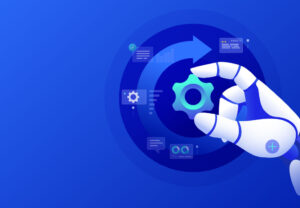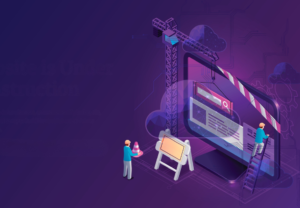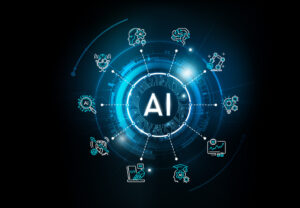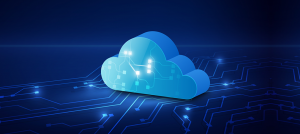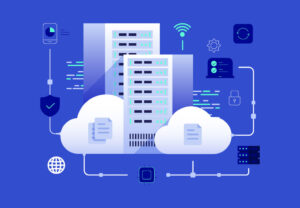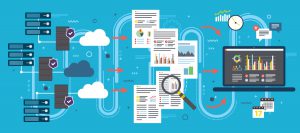Beyond Today: Steering Cloud Strategy with Tomorrow’s AI and ML Innovations
“Forthcoming AI and machine learning advancements demand a proactive shift in enterprise Cloud strategy. Data-rich insights for senior leaders on re-architecting Cloud infrastructure and operational models to effectively support next-generation intelligent systems, ensuring readiness to translate innovation into measurable business outcomes.”
The dialogue surrounding artificial intelligence and the Cloud has moved beyond adoption; it is now firmly centred on strategic anticipation. For senior leaders, the critical question is no longer if AI and machine learning will shape the future, but how to architect a Cloud strategy that anticipates and capitalises on the next wave of these intelligent technologies. The challenge is to build not for the AI of today, but for the more sophisticated, integrated, and autonomous AI of tomorrow.
This requires a fundamental re-evaluation of how we view the Cloud; not merely as infrastructure, but as the central nervous system for an intelligent enterprise. With generative AI poised to contribute between $2.6 trillion and $4.4 trillion in economic impact annually, the organisations that will lead are those making prescient decisions about their Cloud architecture now. [17]
The Current State: A Foundation Built on Widespread Adoption
The integration of Cloud and AI is already extensive, yet the maturity gap reveals significant strategic opportunities for forward-thinking organisations.
- 1. Market Penetration and Investment Patterns
Current adoption metrics demonstrate the ubiquity of Cloud-AI integration,
- a) Over 90% of organisations use Cloud computing in some capacity, establishing the foundational layer for AI-driven Cloud strategy for enterprises [4]
- b) A corresponding 85% are using some form of AI, indicating broad experimentation across sectors [7]
- c) 98% of organisations are exploring generative AI, yet only 39% have deployed it into production [5]
- d) Merely 1% of business leaders consider their company’s AI deployment to be “mature” [1]
This widespread exploration coupled with limited production deployment creates a strategic window for organisations willing to invest in future-proofing Cloud infrastructure for AI workloads.
- 2. Investment Momentum and Inefficiency Challenges
The financial commitment to AI transformation is substantial,
- a) 92% of companies plan to increase their AI spending over the next fiscal cycle [1]
- b) However, 32% of Cloud budgets are wasted on average, a figure that becomes more critical as computationally intensive AI models become standard [4]
- c) The ROI of generative AI in Cloud computing remains inconsistent, with organisations struggling to translate investment into measurable business outcomes
This disconnect between investment and efficiency highlights the need for more strategic approaches to Cloud infrastructure planning and AI workload management.
Emerging Innovations Defining the Next Strategic Cycle
To steer Cloud strategy effectively, leaders must look beyond current applications and consider the technologies that will define the next three to five years.
- 1. The Dominance of Purpose-Built AI Cloud Infrastructure
Standard Cloud infrastructure is no longer sufficient for the demands of next-generation AI applications. The evolution towards specialised infrastructure is driven by several key factors,
- a) 75% of organisations are now using sophisticated, self-hosted models, representing a significant shift from off-the-shelf solutions [7]
- b) Models like BERT have seen usage rise from 49% to 74% year-over-year, indicating growing comfort with complex, proprietary implementations [7]
- c) Cloud infrastructure for large language models requires specialised hardware stacks, including GPU clusters, high-bandwidth networking, and optimised storage systems
The strategic imperative centres on investing in Cloud environments that offer the flexibility to support diverse and demanding workloads, from training complex models to deploying them at scale for real-time inference. This shift necessitates enterprise AI integration with multi-cloud architectures that can provide the best-fit environment for specific AI applications.
- 2. Generative AI as a Core Enterprise Function
Generative AI is transitioning from experimental tool to fundamental business capability,
- a) By 2026, over 80% of enterprises will have used or deployed applications enabled by generative AI [17]
- b) This technology will be responsible for producing 10% of all data by 2025 [17]
- c) The explosion in AI-generated content requires comprehensive data governance frameworks and quality management systems
Strategic AI adoption in Cloud environments must address not just storage and compute requirements, but also data lineage, security, and ethical AI considerations. The current impediments to AI adoption, data quality and security will be amplified in the generative era, requiring robust governance frameworks.
- 3. AI-Driven Cloud Operations and Security
The complexity of next-generation applications requires more intelligent approaches to Cloud management itself,
- a) AIOps (AI for IT Operations) is becoming essential for managing dynamic, distributed Cloud environments
- b) 67% of Cloud environments use OpenAI or Azure OpenAI SDKs, expanding the attack surface for AI-related vulnerabilities [7]
- c) Cloud-native AI development trends indicate increasing reliance on automated security responses and threat intelligence
A comprehensive Cloud security strategy for AI models must incorporate AI-based tools for anomaly detection, threat intelligence, and automated incident response to protect both infrastructure and the intelligent models it hosts.

Strategic Imperatives for Leadership
Navigating this evolving landscape requires decisive action across multiple dimensions of organisational capability and technological infrastructure.
- 1. Re-architect for AI Workloads
Current Cloud architecture must be evaluated against future AI demands rather than legacy application requirements,
- a) Prioritise access to scalable compute resources, including GPUs, TPUs, and emerging AI-specific processors
- b) Implement high-throughput networking capabilities to support data-intensive model training and inference
- c) Develop efficient data pipelines that can handle the volume and velocity requirements of AI applications
- d) Assess multi-cloud and hybrid Cloud models for their ability to provide optimal environments for specific AI workloads rather than cost arbitrage alone
Managing AI workloads in hybrid Cloud environments requires sophisticated orchestration capabilities and vendor-agnostic management tools that can optimise resource allocation across diverse infrastructure platforms.
- 2. Institute Robust Data and AI Governance
Successful AI strategy depends on high-quality, secure, and ethically managed data foundations,
- a) Establish clear governance frameworks that address the entire lifecycle of data and AI models from ingestion and training to deployment and retirement
- b) Implement data quality monitoring and validation systems that can maintain model performance over time
- c) Develop security protocols specifically designed for AI model protection, including adversarial attack detection and model versioning controls
- d) Create ethical AI guidelines that address bias detection, fairness metrics, and transparency requirements
Given that workers with AI skills can command a 56% wage premium, investing in governance talent is as critical as the underlying technology infrastructure. [17]
- 3. Foster a Culture of Strategic AI Integration
Technology implementation alone does not create sustainable competitive advantage,
- a) Industries best positioned to adopt AI have seen their productivity growth nearly quadruple since 2022 [17]
- b) These organisations report 3x higher revenue per employee growth compared to AI laggards [17]
- c) Success requires top-down commitment to identifying high-value use cases that align with core business objectives
- d) Teams must be equipped with the skills and tools necessary for successful implementation, including change management and continuous learning programmes
The generative AI impact on Cloud spending will be substantial, making it essential to establish clear ROI metrics and performance benchmarks for AI initiatives.
Financial and Performance Implications
Understanding the economic impact of strategic AI adoption provides context for investment decisions and resource allocation priorities.
- 1. Cost Optimisation and Resource Efficiency
Effective Cloud strategy for AI workloads requires sophisticated cost management approaches,
- a) Traditional Cloud cost optimisation strategies may not apply to AI workloads that require consistent high-performance computing resources
- b) Model training costs can vary dramatically based on architecture choices, data preprocessing efficiency, and infrastructure optimisation
- c) Inference costs at scale require careful consideration of model compression, edge deployment, and caching strategies
- 2. Revenue Generation and Competitive Positioning
Strategic AI implementation creates measurable business value,
- a) Organisations with mature AI capabilities report revenue growth rates 5 times higher than competitors [23]
- b) Customer satisfaction scores improve by an average of 15-20% when AI is integrated into customer-facing processes [24] [25]
- c) Operational efficiency gains typically range from 20-30% in AI-optimised workflows [23]
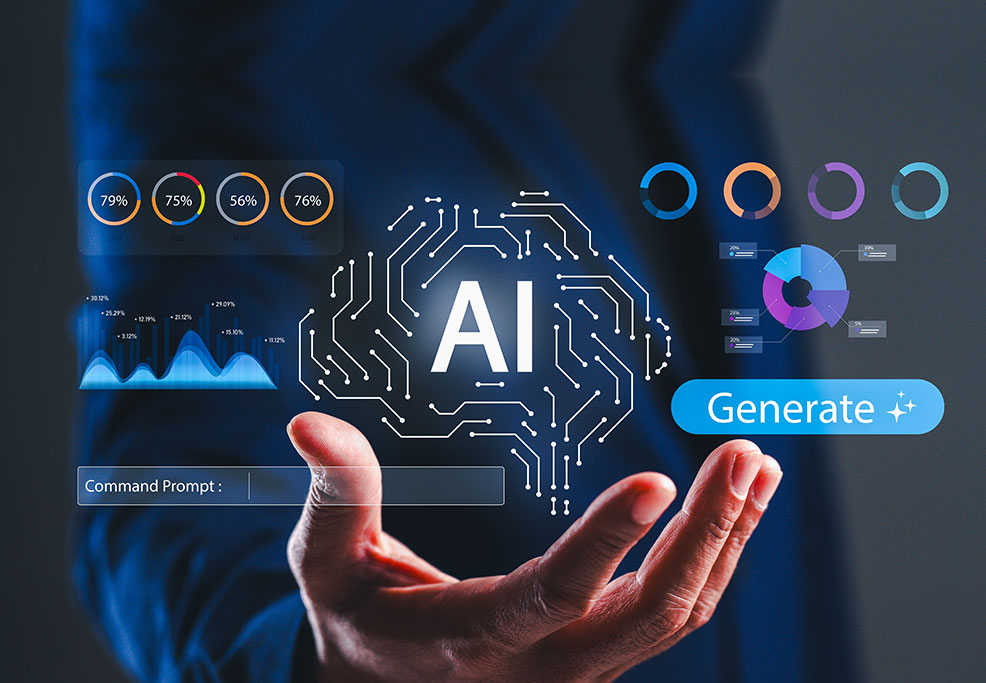
Implementation Roadmap for Strategic Success
Translating strategic vision into operational reality requires structured approaches to technology adoption and organisational change management.
Phase 1: Infrastructure Assessment and Modernisation
- a) Conduct comprehensive audits of existing Cloud infrastructure capabilities against AI workload requirements
- b) Identify gaps in compute, storage, networking, and security capabilities
- c) Develop migration plans for legacy systems that cannot support AI workloads
- d) Establish baseline performance metrics for future optimisation efforts
Phase 2: Pilot Programme Development and Scaling
- a) Select high-impact, low-risk use cases for initial AI implementation
- b) Develop proof-of-concept solutions that demonstrate business value and technical feasibility
- c) Create scaling frameworks that can support broader organisational adoption
- d) Implement feedback mechanisms to capture lessons learned and optimisation opportunities
Phase 3: Enterprise-wide Integration and Optimisation
- a) Deploy AI capabilities across core business processes and customer touchpoints
- b) Implement advanced monitoring and management tools for ongoing performance optimisation
- c) Develop internal AI expertise through training programmes and strategic hiring initiatives
- d) Establish partnerships with AI technology vendors and Cloud service providers for ongoing innovation
Conclusion
The integration of AI and Cloud computing has created a new competitive landscape where advantage is determined by foresight rather than reactive adoption. The statistics paint a clear picture: while exploration is widespread, mature strategic implementation remains rare and therefore represents a significant competitive opportunity.
Leaders who act now to align their Cloud strategy with the trajectory of AI innovation will not only navigate the complexities of tomorrow but will also define the terms of business performance for years to come. The future belongs not to those who simply adopt Cloud technology, but to those who intelligently architect it for the AI applications that are yet to emerge.
Motherson Technology Services leverages these emerging trends and technologies to help companies achieve sustainable competitive advantage through strategic AI-cloud integration. By combining deep technical expertise in Cloud-native AI development, comprehensive data governance frameworks, and proven implementation methodologies, Motherson enables organisations to transform their Cloud infrastructure from mere operational capability into a strategic differentiator. This approach ensures that clients are not simply keeping pace with technological change, but actively shaping their industries through intelligent, forward-thinking Cloud strategies that anticipate and capitalise on the next wave of AI innovation.
References
[2] https://www.ml-science.com/blog/2025/4/1/the-technical-evolution-of-ai-in-2025
[3] https://www.eweek.com/artificial-intelligence/ai-trends/
[4] https://www.cloudzero.com/blog/cloud-computing-statistics/
[5] https://cloud.google.com/resources/content/state-of-ai-infrastructure
[6] https://cloud.google.com/transform/ai-impact-industries-2025
[7] https://www.wiz.io/reports/the-state-of-ai-in-the-cloud-2025
[8] https://cloud.google.com/transform/2025-and-the-next-chapters-of-ai
[9] https://mobidev.biz/blog/future-machine-learning-trends-impact-business
[10] https://k21academy.com/ai-ml/the-role-of-ai-and-ml-in-cloud-computing/
[12] https://www.securekloud.com/blog/the-future-of-cloud-computing-trends-and-predictions-for-2025/
[13] https://barc.com/news/survey-trends-data-management-2025/
[14] https://cloud.google.com/resources/ai-trends-report
[15] https://cloud.google.com/resources/content/future-of-ai-report
[17] https://www.missioncloud.com/blog/ai-statistics-2025-key-market-data-and-trends
[18] https://www.classicinformatics.com/blog/ai-development-statistics-2025
[19] https://explodingtopics.com/blog/ai-statistics
[20] https://www.technogiq.com/blogs/whats-new-in-cloud-computing-in-2025/
[21] https://www.tierpoint.com/blog/cloud-computing-innovation/
[22] https://www.thesoftwarereport.com/the-top-25-ai-executives-of-2025/
[25] https://cloud.google.com/transform/gen-ai-kpis-measuring-ai-success-deep-dive
About the Author:

Rahul Arora
Practice Head – DevOps
Motherson Technology Services
Rahul spearheads Motherson’s global Cloud DevOps initiatives, driving large-scale transformations for enterprises across industries. With deep expertise across AWS, Azure, and multi-cloud ecosystems, he has led mission-critical programs in migration, automation, DevSecOps, and cost optimization, ensuring resilience and efficiency at scale.
A passionate technologist with a strong techno-managerial edge, Rahul blends hands-on engineering depth with strategic leadership. He has been instrumental in shaping AI-driven DevOps automation frameworks and enterprise-grade compliance solutions, consistently bridging technology execution with boardroom priorities to maximize customer value.

 November 17, 2025
November 17, 2025 Rahul Arora
Rahul Arora





